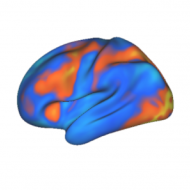Modern technologies allow eye movements to be used as a tool for studying language processing during tasks such as natural reading. Saccadic eye movements during reading turn out to be highly sensitive to a number of linguistic variables. A number of computational models of eye movement control have been developed to explain how these variables …
Category Archives: Language
Redefining Mirror Neurons
In 1992 Rizzolatti and his colleagues found a special kind of neuron in the premotor cortex of monkeys (Di Pellegrino et al., 1992). These neurons, which respond to perceiving an action whether it’s performed by the observed monkey or a different monkey (or person) it’s watching, are called mirror neurons Many neuroscientists, such as V. …
Grand Challenges of Neuroscience: Day 5
Topic: Language Everyday (spoken) language use involves the production and perception of sounds at a very fast rate. One of my favorite quotes on this subject is in “The Language Instict” by Steven Pinker, on page 157. “Even with heroic training [on a task], people could not recognize the sounds at a rate faster than …
History’s Top Brain Computation Insights: Day 15
15) Consciousness depends on cortical communication; the cortical hemispheres are functionally specialized (Sperry & Gazzaniga – 1969) It is quite difficult to localize the epileptic origin in some seizure patients. Rather than removing the gray matter of origin, neurosurgeons sometimes remove white matter to restrict the seizure to one part of the brain. One particularly …
Continue reading “History’s Top Brain Computation Insights: Day 15”
